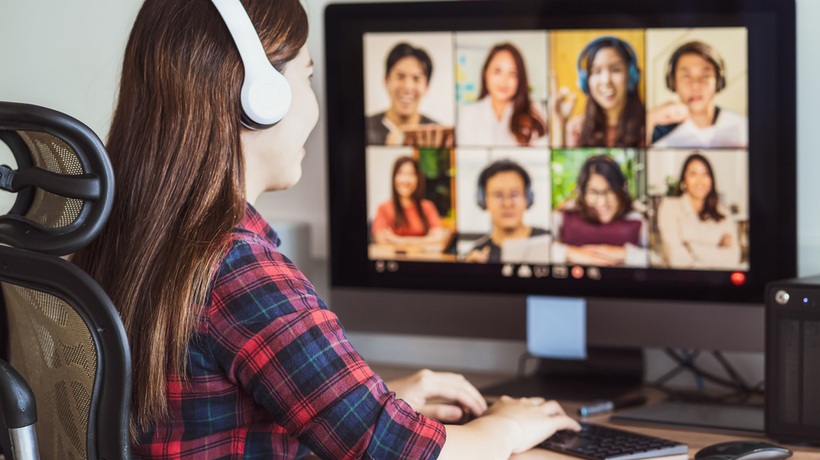How To Save Your Remote Classes
Due to COVID-19, schools switched to the emergency remote teaching format [1] earlier this year, and many schools are still in the "remote mode" today. The quick remote solution allowed teaching and learning to continue without interruption in terms of time, but it also caused irritation in many aspects, such as the disconnection students felt, less engagement in class, and rising concerns about equity, accessibility, and diversity. Educators also questioned if remote teaching hurt online education [2], which usually is well-planned by professionals in Instructional Design.
3 Key Components For Successful Remote Classrooms
The transition from in-person instruction to remote teaching is not just about "turning on a camera and lecturing"; it can be tough and full of challenges. How to retain and engage students in a remote environment is what needs to be considered. Successful remote classrooms have 3 key components in common: communication, interaction, and collaboration.
1. Communication In A Remote Environment
One of the reasons that students feel disconnected during remote teaching and learning is due to the lack of opportunities for in-person communication. Communication plays an important role in a remote environment, and it is way more than sending and receiving emails; it is the means by which to foster a healthy learning community. By building a dynamic communication mechanism in remote classes, it ensures timely and effective information exchange and supports students in multiple ways. The following 4 solutions establish trustworthy communication in a remote environment.
- Use announcements and emails often and wisely to broadcast teaching updates, share additional reading and media resources, and provide updates about conference and subject-related event opportunities to keep students up to date and broaden their horizons.
- Establish regular virtual office hours [3] to allow remote learners to ask questions that are not addressed during class, obtain an in-depth analysis of their learning progress, and receive emotional support during remote learning.
- Clarify response expectations to ease learning anxiety by providing a reasonable timeframe for email responses and assignment feedback.
- Provide timely and constructive feedback on activities and assignments in order to closely monitor students' learning progress and support them by addressing any related concerns.
2. Interaction Matters
The reason to include proper and reasonable interactions within remote teaching is to empower learning. By developing different activities, integrating technologies, and creating a variety of assessment opportunities, interaction [4] encourages students' engagement and helps knowledge retention. The interactions can be built around the following relations:
- The interaction between students and the instructor welcomes active learning by allowing students to be part of the teaching. For instance, the crowdsourcing approach allows students to contribute to the teaching content instead of being passive learners.
- The interaction between students and content allows students to be deeply connected with learning content. Discussion forums [5] have been used a lot in building the process. With clear instructions and rubrics, students can steer the conversations with more flexibility and share insights with an in-depth reflection of the acquired knowledge and skills. Other commonly used interaction activities are themed scavenger hunts, virtual field trips to clinical sites/museums/zoos, interactive videos (in-video quiz), and question-guided lectures, etc.
- The interaction between students and students involves collaboration and group projects, which happens during class and can continue after. For instance, a video conferencing tool, such as Zoom, allows breakout rooms [6] for students to join smaller groups to have more detailed conversations about projects in class. Peer reviews and debates allow for deeper reflection over learning content by taking responsibility for each other's work.
3. Collaboration To Support A Lifelong Learning Community
Building a learning community through a remote class welcomes equity, diversity, and inclusion. Through collaboration, students find common interests, connect deeply with each other, and ultimately establish their social networking, which is lifelong.
- By creating best-fit group projects, students will form their own learning community based upon topics that allow them to explore different learning journies together. Think-pair-share (TPS)—answer a question, share a thought, and solve a problem—is one of the strategies that enables collaboration and allows everyone to play a role in their own learning, which constructs the equal learning community.
- Educational technology plays an important role in fostering collaboration in remote classes. With carefully selected technology and tools, students can collaborate freely without time and location limitations. They can form their own working groups, project teams, or study groups to learn together and share insights with a high level of flexibility. Many collaboration tools and group communication tools, such as Google Docs, Slack [7], and Nectir [8], have received much more attention in higher education recently, which indicates the high demand for building learning communities in remote teaching and learning.
Improvements in communication, interaction, and collaboration will increase students' engagement, rebuild the teacher and student relationship, and maximize the benefits students receive from a remote class. Remote teaching is not just with a camera, it is real for each student behind the screen.
References:
[1] The Difference Between Emergency Remote Teaching and Online Learning
[2] Will Shift to Remote Teaching Be Boon or Bane for Online Learning?
[3] 6 Ways to Move to Virtual Office Hours
[4] Student-Instructor Interaction
[5] Discussion Boards in Physically Distanced, Hybrid, and Remote Courses
[7] 4 Reasons Slack Will Change How You Teach
[8] Facing a Digital Spring Quarter, UCSB Preps Faculty for Remote Instruction
